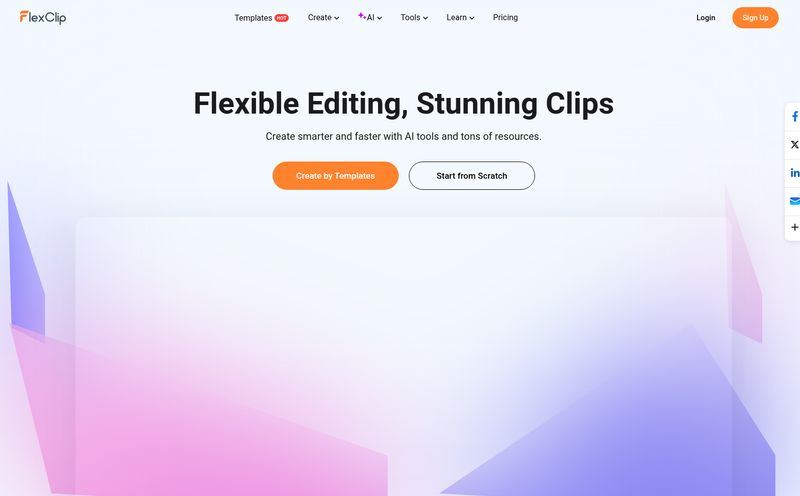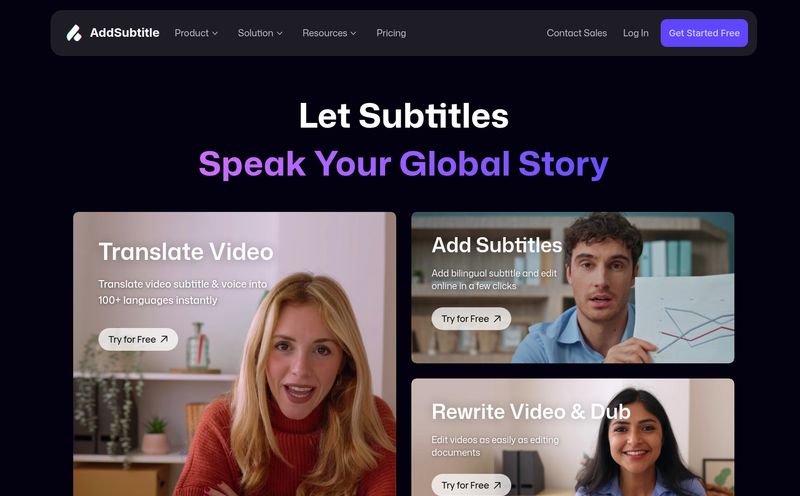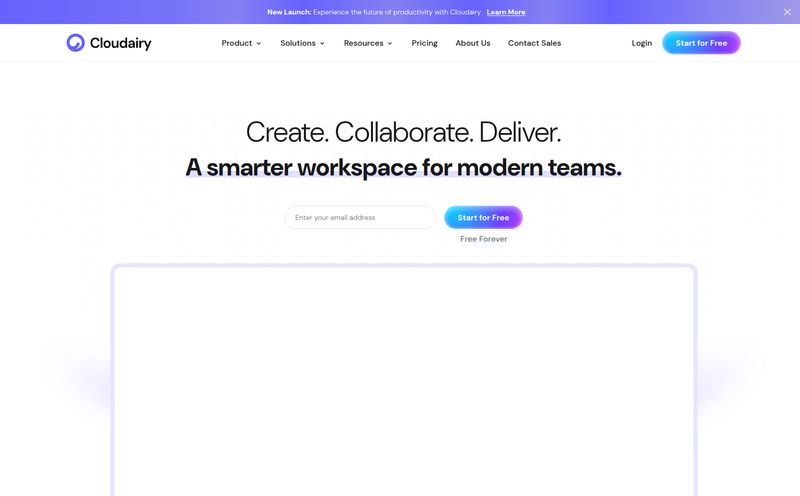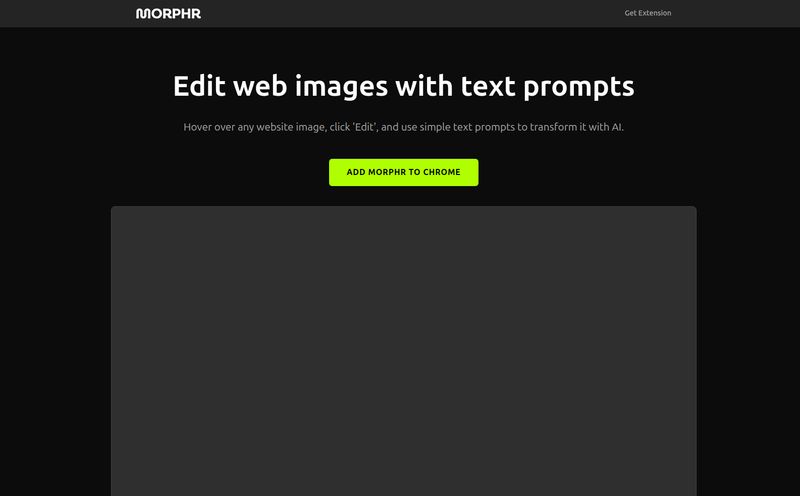You know how it is in the SEO and tech world. One minute, a groundbreaking new AI tool is all over your feed, promising to revolutionize your workflow. The next? Crickets. It’s the digital equivalent of a boomtown that springs up overnight and is a ghost town by sunrise. That’s the feeling I get when I look into PixAIVideo.
I’ve been in this game for a while now, watching trends come and go, and the current AI video generation space is a real gold rush. Everyone's scrambling to create the next big thing, the tool that will finally make high-quality video creation as easy as typing a sentence. So when a name like PixAIVideo pops up on my radar, promising intelligent, story-driven video creation, my interest is naturally piqued. But then, you go to check it out and... well, you hit a wall.
This isn't just a review; it's a bit of an investigation. Let's talk about what PixAIVideo was supposed to be, what it promised, and the all-important question: where is it now?
The Big Promise: What Was PixAIVideo?
On paper, PixAIVideo sounded fantastic. It wasn't just another text-to-video generator. It branded itself as an intelligent creation platform. The whole idea was to move beyond just stringing together stock clips or generating abstract AI visuals. The platform was designed for storytelling. Think children's stories, historical explainers, personal biographies, and creative narratives brought to life through AI.
The process was pitched as a simple three-step affair, which is always a good sign. No one wants to spend weeks learning a new, complicated interface. We want to plug in our idea and see the magic happen, right? It was meant to be a SaaS platform that could take your script and not just create a video, but intelligently break it down into scenes and shots, almost like a tiny AI director sitting on your shoulder.
Unpacking the Toolbox: The Promised Features
So, what was supposed to be under the hood? Based on the information floating around, the feature set was pretty ambitious and genuinely useful for content creators.
AI-Powered Storyboarding and Shot Creation
This was the standout feature for me. The concept of "AI split shots" and "AI storyboard generation" is a game-changer. Instead of just feeding the AI a wall of text and hoping for the best, PixAIVideo was designed to interpret the narrative structure. It would theoretically create a storyboard, identifying key scenes, characters, and actions. This moves a tool from a simple generator to a creative partner. It’s a feature that veterans of video production would instantly appreciate.
The Core AI Generation Engine
Of course, it had the core functionalities you’d expect. "Shot text to picture" and "shot picture to video" were central to its operation. You could presumably generate scenes from a script and then animate those scenes. The idea was to build your video piece by piece, shot by shot, giving you more granular control than many of the one-click-and-pray tools out there. It even offered a variety of visual styles, so you weren't stuck with one generic AI look.
Intelligent Editing and Final Touches
A raw AI video is rarely ready for primetime. PixAIVideo seemed to understand this. It promised "intelligent editing and synthesis video" and "smart clipping". This suggests some level of automated post-production, helping to pace the video correctly and stitch the scenes together. On top of that, it included practical customization options that we all need, like changing subtitle fonts and adjusting the speed of the AI-generated voiceover. These small details are often what separates a usable tool from a frustrating one.
So, What Happened to PixAIVideo.com?
Here’s the million-dollar question. You get all excited about these features, you're ready to see if it lives up to the hype, and you navigate to pixaivideo.com. And you find this:

Visit PixAIVideo
A parked domain page, courtesy of GoDaddy. Oof. In the fast-moving tech world, this is rarely a good sign. It's a digital ghost town. This could mean a few things:
- It never fully launched: It might have been a great idea that never got past the beta stage or ran out of funding before a public release. This happens all the time.
- It was acquired or rebranded: Sometimes a team gets "acqui-hired," and the original product is absorbed into a larger company's tech stack.
- It simply failed to find its market: The AI video space is incredibly competitive. With giants like OpenAI's Sora making headlines and established players like RunwayML and Pika Labs dominating the conversation, a newcomer has to fight hard for attention.
Whatever the reason, the project appears to be dormant or dead. It’s a shame, because the story-centric approach was a really interesting angle.
The Potential and the Pitfalls
Even as a ghost, we can analyze the concept. The pros were clear: an easy-to-use interface focused on storytelling, with smart features and customization. It seemed designed for creators, not just tech enthusiasts.
The cons, however, are now glaringly obvious in hindsight. There was never any clear information on advanced features, the full extent of the AI's editing capabilities was a mystery, and most importantly, no one ever saw a pricing page. This lack of transparency is a classic red flag for a product that's not quite ready for the real world.
The AI Video Gold Rush and Cautionary Tales
The story of PixAIVideo, whether it’s over or just on a long pause, is a perfect microcosm of the current AI industry. There is so much excitement and so much venture capital money flying around that tools are announced and hyped up sometimes long before they are viable products. For us, the users and creators, it’s a reminder to be a little bit cautious. Don't build your entire content strategy around a brand-new, unproven tool that could vanish overnight.
I've always felt it's better to stick with platforms that have a proven track record and a clear business model. It's fun to experiment with the new shiny toy, but for your core business and traffic generation, reliability is everything.
Frequently Asked Questions About PixAIVideo
- What was PixAIVideo supposed to do?
- PixAIVideo was designed as an AI-powered platform to turn text and scripts into videos. Its main focus was on storytelling, with features like AI storyboard generation, text-to-image creation, and smart video editing for narratives like children's stories or historical accounts.
- Is PixAIVideo still available?
- As of late 2024, the domain pixaivideo.com is parked and does not lead to a working tool. It appears the platform is either no longer available, was never fully launched, or is undergoing a major change.
- What were the key features of PixAIVideo?
- Its key promised features included AI split shots for creating scenes, AI storyboard generation, text-to-picture, picture-to-video, intelligent editing, customizable subtitles, and adjustable voiceover speed.
- Were there any pricing plans for PixAIVideo?
- No. Pricing information for PixAIVideo was never publicly released, which suggests the tool never made it to a full commercial launch.
- What are some good alternatives to PixAIVideo?
- If you're looking for AI video creation, especially text-to-video, you should check out established platforms like RunwayML, Pika Labs, and Kapwing. For high-end generation, keep an eye on developments with OpenAI's Sora.
A Final Thought
While PixAIVideo itself might be a digital mystery, the idea behind it is very much alive. The demand for AI tools that can intelligently interpret and visualize a narrative is huge. The future of content creation lies in this direction, where AI is less of a magic black box and more of a creative collaborator. The fate of PixAIVideo serves as a valuable lesson – a great idea is one thing, but execution and endurance in this competitive market are what truly matter. For now, we'll keep our eyes peeled for the next tool that tries to crack the code of AI storytelling. Hopefully, that one will remember to renew its domain registration.



